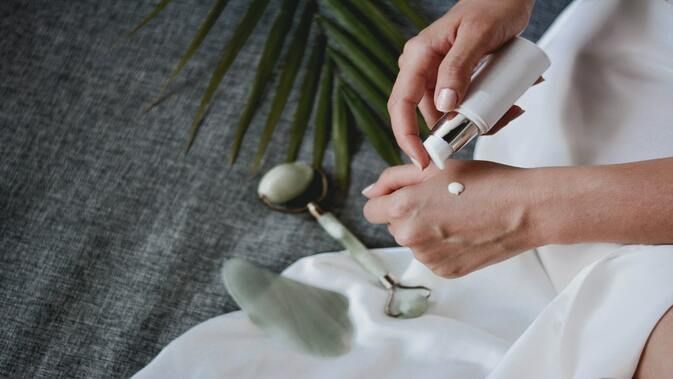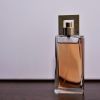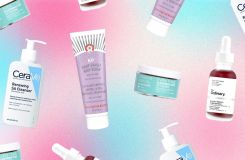
Cleansers for the face are an integral part of regular skin care routines because they remove dirt, oil, debris, and other environmental pollutants. Using a cleanser with a low pH is also helpful because it helps repair and keep up the skin's protective barrier, the stratum corneum.
The stratum corneum, or skin barrier, protects the skin by blocking out harmful environmental factors and keeping in necessary moisture. Some of the bad things that can happen to skin that isn't healthy are inflammation, dryness, irritation, and oversensitivity.
What Exactly Is a Low pH Cleanser?
The acidity or basicity of a substance is measured using the pH scale. It covers a wide range from 0 to 14, with 0 being the most acidic and 14 the most alkaline. The stratum corneum is the skin's outermost layer, and its job is to keep bacteria and other pathogens from the environment from penetrating to the skin's deeper layers. The acid mantle, an extremely thin protective film, is a component of this layer.
True to its name, the acid mantle has a slightly acidic pH level that makes it hard for bacteria and other microbes that can cause disease to grow. The stability of resident bacteria is also preserved by a pH that is just right. The skin microbiome is an ecosystem that needs balance and stability to work well and keep pathogens out of the body. It is made up of the "good" bacteria that live on the surface of the skin.
The skin's barrier is protected and kept in check by the interplay of the microbiome, acid mantle, and lipid barrier. The average pH of human skin is thought to be somewhere between 5.0 and 6.0. There are differing opinions on the precise number, with one study finding that skin's natural pH is below 5.0 and averages 4.7. A proper cleansing with suitable products will remove all traces of grime, pollution, dead skin, and oil from your skin. So, they improve the look and feel of the skin without upsetting the acid mantle.
What's Good About A Low pH Cleanser
Using a cleanser with a low pH helps keep the skin barrier functioning normally. Soap and water washes can significantly alter the acidity of the skin, damaging its barrier function. This can increase the risk of skin disorders and lead to dehydration, inflammation, and irritation.
Numerous inflammatory skin conditions, including contact dermatitis, atopic dermatitis, and acne vulgaris, and fungal infections caused by the yeast Candida albicans, can be exacerbated by shifts in pH.
Skin flora, also known as microbiota, consists of bacteria, fungi, and viruses that live on the skin's surface. Together with the immune system, they help keep the skin in good condition.
A pH of 4.0–4.5 has been shown to be optimal for this bacterial flora; a more alkaline pH of 8.00–9.00 will kill off this microbiota and promote the growth of pathogenic bacteria like Staphylococcus aureus.
Most soaps tested (including those designed to treat acne and other skin conditions) had a pH of between 9 and 10, which is significantly higher than the pH range typically found in the earth's protective acid mantle.
Low pH cleansers keep skin healthy by preventing moisture loss and supporting the protective effects of the acid mantle and skin barrier, while high pH cleansers like traditional soaps can strip away the skin's natural lipids, causing irritation, dryness, an increase in bacterial count, and other negative effects on the skin's barrier and health.
Choosing a Skin-Friendly Low pH Cleanser
It can be difficult to find a cleanser whose pH is close to your skin's natural pH because not all products list the exact pH on their labels. The majority of them claim to be low in pH or neutral in pH on the bottle.
An easy way to check if your new cleanser is the right one is to use a pH testing strip, which can be found in any drug store and will give you an accurate reading in a matter of seconds.
When used as intended, the surfactants in all cleansers do a great job of removing dirt and oil from the skin, but they also penetrate the protective outer layer of the skin and can leave the skin feeling itchy, tight, and red.
It is important to choose a cleanser with lipids, occlusives, and humectants to bring back moisture and protect the skin barrier from these bad things.
Finally, choose a product without added fragrances, silicones, sodium-lauryl sulphate, or dyes; these ingredients can aggravate sensitive skin.
Oily skin
For oily skin, it would be best to use a cleanser that exfoliates and controls oil. Ideally, the cleanser would have a low pH. Niacinamide-containing cleansers have been shown to reduce sebum (oil) production, making them an effective treatment for oily skin. This, in turn, can aid in the reduction of oil production and the improvement of oily skin's pore size and texture.
The outermost layer of skin can be exfoliated of debris and dead skin cells by using salicylic acid, which works by loosening and breaking apart the bonds that hold skin cells together. It can also control sebum production and eliminate clogged pores. Be wary of cleansers that are too thick for your skin type, like creams and lotions, which can clog pores and lead to the appearance of blackheads and whiteheads.
Dry skin
If you have dry skin, you need a cleanser with a low pH that contains moisturising ingredients to keep your skin healthy and comfortable. The humectant hyaluronic acid is highly prized for its hydrating properties and is used in a wide variety of skin care products. It can draw water to itself and hold onto it, which helps the skin retain its elasticity and plumpness. The stratum corneum contains this acid in its natural state.
Natural lipids found in the skin serve to fortify its protective barrier and prevent it from taking in potentially damaging allergens and impurities. Seek out a low pH cleanser with ceramides, a type of lipid that will strengthen the skin's barrier and boost hydration, to maintain this function. Avoiding cleansers with antiseptic ingredients like alcohol and witch hazel is recommended for those with dry skin.
Sensitive skin
A pH imbalance in the skin results in red, sensitive, flaky, stinging, and itchy skin that is prone to skin conditions like atopic dermatitis. Using a gentle cleanser with a low pH can bring back the skin's natural pH balance and protect it from damage from the outside world. For relief from inflammation and irritation, try using shea butter, which contains potent anti-inflammatory and antioxidant properties. This mild substance is rich in fatty acids and can help calm, soften, and condition the skin.
A second option that works well for delicate skin is glycerin. It is a humectant that is naturally present in the stratum corneum. Glycerin also aids in elasticity maintenance, barrier protection, and barrier repair. Avoiding additives like fragrances, sodium-lauryl sulphates, and dyes is especially important for those with sensitive skin because they can aggravate existing sensitivities.
Acne-prone skin
Skin that is prone to acne may have a damaged protective barrier that allows acne-causing bacteria to enter the skin. Use a cleanser with a low pH to support your skin's natural defences and look for one with acne-fighting ingredients to help correct any imbalance.
Acne-prone skin is commonly characterised by pimples, excess oil, and bacteria.Whiteheads and blackheads are examples of acne lesions that don't cause inflammation. Inflammatory acne lesions include papules, pustules, and cysts. Because acne is hard to treat, it is often best to use a product that has more than one active ingredient.
If you want to unclog your pores and kill the bacteria that are causing them to become clogged, use a cleanser that contains a strong antibacterial agent like benzoyl peroxide. Salicylic acid is another great choice because it not only removes dead skin but also stops blackheads from forming in the future. Glycolic acid can also unclog pores by removing dead skin cells and excess oils. It is a humectant like hyaluronic acid and can help keep the stratum corneum moist.
Cleansers with coconut or mineral oil should be avoided because they can clog pores and make acne worse.
A low-pH cleanser: yes or no?
The answer is yes. To keep the protective barrier of the skin intact, a cleanser with a low pH is recommended for all skin types. Those who suffer from acne, eczema, or other forms of skin irritation (such as itchy, dry, or red skin) will benefit greatly from this practise. This suggests that the barrier has been compromised and that pH levels are off.
A cleanser with a low pH can be used to remove grime and revive the skin. When used regularly, it can help keep the skin's natural pH, strengthen the skin barrier, and reduce or get rid of bothersome symptoms.
Was this helpful?
Kingerlon collects & utilizes cookies from third-parties & affiliate networks to improve user experience. If you buy a product or service after clicking on one of our links, we may get a commission.










